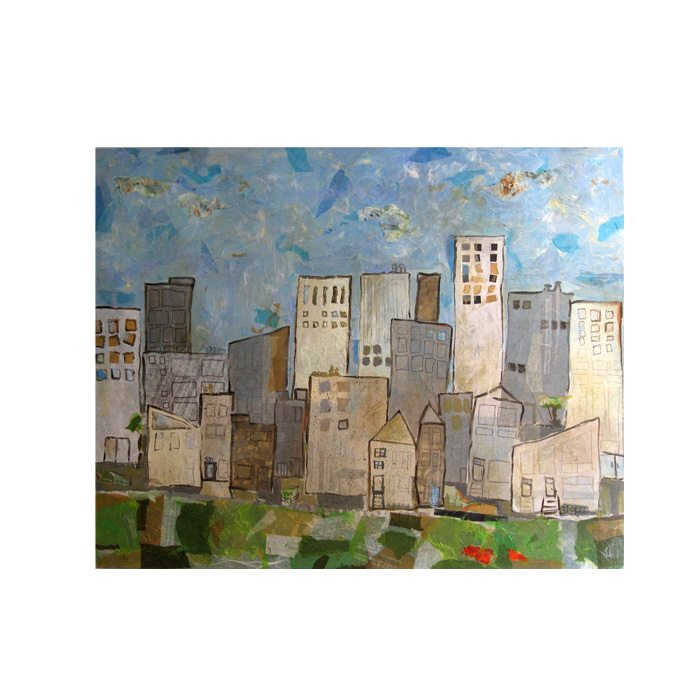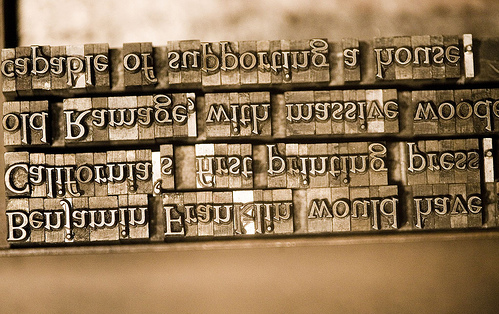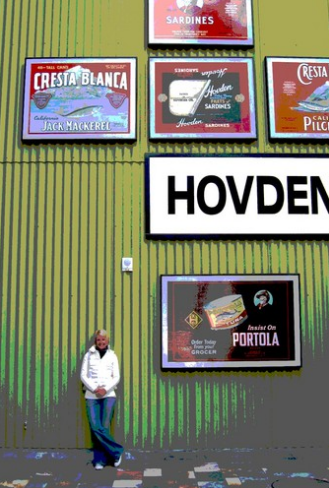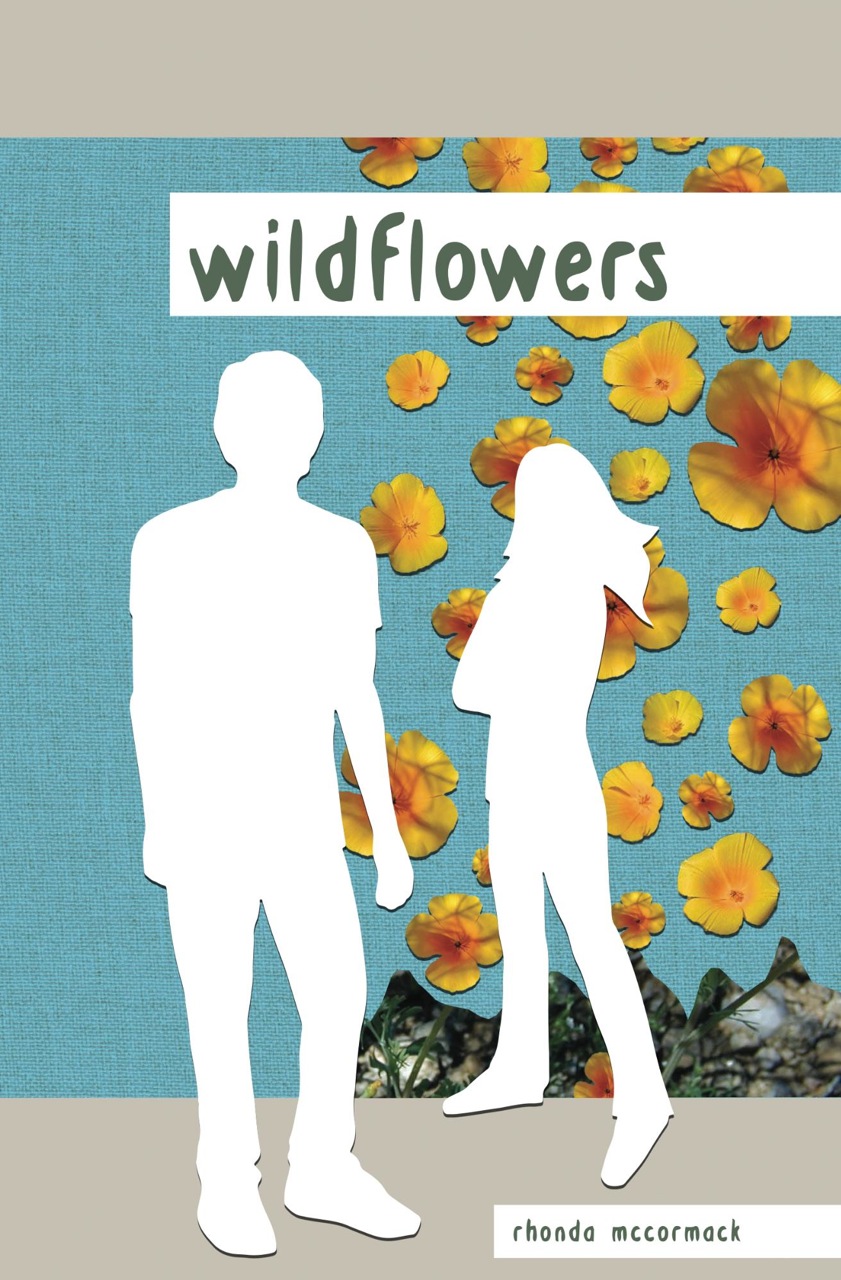Meet the Writer - Rhonda McCormack
An author interview on the craft of writing, and on the changing landscape of publishing.
Featured Writer: Rhonda McCormack
Book: Wildflowers, Ecotopian mystery YA (more info below)
Buy it:
Intro, from Heidi:
I am very happy and proud to introduce you to my dear friend, Rhonda. The moment I met her, it was like flashing back to seventh grade, where you end up sitting next to someone at lunch just because they smiled at you and seemed nice and not bitchy (like those other girls) and you just become instant friends right then and there. Except it wasn't seventh grade, it was my very first grown-up writing event, our regional SCBWI conference. But still, I have the feeling that had she been eating PB &J for lunch, she'd have been happy to split it with me. Since then, Rhonda has been one of my most trusted critique partners, and just one of the many friends I've made through SCBWI. I'm planning an upcoming post extolling the virtues of attending a conference for newbies, but for now you can read this from last year.Rhonda's stories are varied but they all have that magical quality that every author strives for: a main character to whom everyone can relate. She speaks to the misunderstood, the ones trying to make a difference, and the ones hoping that someone will notice (or not!). She has one of the most dedicated work ethics I know, cranking out page after page, revising and editing to perfection. And usually, she's working on a few projects all at once and - oh, in her spare time (ha ha) she is an accomplished painter. So to say Rhonda is a good influence on me is an understatement. She's the one who always pushes me to want to do better, a creative yin to my yang—or is it yang to my yin? At any rate, when you are a creative person, you soon realize that there are people in your life who are either vampires, those who suck out all of your creative energy and throw all sorts of negativity at you and make you feel bad; and then there are the sages and muses, those friends who inspire, support and help nurture the seeds of your creativity, and celebrate with you when it comes into bloom. I've gotten to that point in my life where I shut down the vampires and open up to the sages.The latest inspiring thing that Rhonda has done is to jump head-first into the world of self-publishing. Now, hang, on a minute, don't judge. Self-pubbing isn't what it used to be. In fact, just 4 short years ago when I first started this writing journey, the only people who self published were (for the most part) amateur writers looking to get their life story in print to hand down to their grandchildren. You would also see a lot of erotica and science fiction. And the problem with these types of books wasn't that the stories themselves were bad, but that they lacked the professionalism, the polish of a literary powerhouse team that you get when you have an agent, an editor, book designer and art director all working together to make the writer's piece really stand out, and be the best it can be. Not to mention the dollars behind a traditional publishing house that would go into marketing the book once finished.A lot of self-pubbed titles end up only being edited by the writer themselves, which we all know can be a HUGE mistake. The covers are done quickly with desktop software, and the end product ends up a bit...meh. Don't ever believe the line "You can't judge a book by its cover," because that is exactly the first thing that every reader does. But as Rhonda describes below, the self-pubbers of today would be nowhere without the writers before us paving the way.
So to say Rhonda is a good influence on me is an understatement. She's the one who always pushes me to want to do better, a creative yin to my yang—or is it yang to my yin? At any rate, when you are a creative person, you soon realize that there are people in your life who are either vampires, those who suck out all of your creative energy and throw all sorts of negativity at you and make you feel bad; and then there are the sages and muses, those friends who inspire, support and help nurture the seeds of your creativity, and celebrate with you when it comes into bloom. I've gotten to that point in my life where I shut down the vampires and open up to the sages.The latest inspiring thing that Rhonda has done is to jump head-first into the world of self-publishing. Now, hang, on a minute, don't judge. Self-pubbing isn't what it used to be. In fact, just 4 short years ago when I first started this writing journey, the only people who self published were (for the most part) amateur writers looking to get their life story in print to hand down to their grandchildren. You would also see a lot of erotica and science fiction. And the problem with these types of books wasn't that the stories themselves were bad, but that they lacked the professionalism, the polish of a literary powerhouse team that you get when you have an agent, an editor, book designer and art director all working together to make the writer's piece really stand out, and be the best it can be. Not to mention the dollars behind a traditional publishing house that would go into marketing the book once finished.A lot of self-pubbed titles end up only being edited by the writer themselves, which we all know can be a HUGE mistake. The covers are done quickly with desktop software, and the end product ends up a bit...meh. Don't ever believe the line "You can't judge a book by its cover," because that is exactly the first thing that every reader does. But as Rhonda describes below, the self-pubbers of today would be nowhere without the writers before us paving the way.

The landscape of publishing is changing, and fast. Now, done right, self-publishing can be the impetus to a successful writing career. Take my friend Anne Tibbets for example. She started out with a short fantasy novella, pumped it up on Smashwords, Goodreads, dozens of book blogs, and got some recognition for herself. When she was ready to send out her next book, she already had readers waiting for it, continued her forward momentum of readership and good reviews, and when she was ready to send out her next project, it got signed with an agent. It's all in how you present yourself, and it's a LOT about self-marketing. Even if you get signed with a traditional publisher, you will be expected to do your own share of marketing. And hopefully you will have an awesome friend like me who will feature you on their blog :DI am more than happy to be a cog in the marketing machine for Rhonda's debut YA novel, Wildflowers, especially having had a front-seat-view to its evolution. Wildflowers is the first of three books (unrelated) that Rhonda will be releasing under her publishing house, Row Press. She is currently working on her fourth book, a contemporary dystopian fantasy.
On craft:
-
How old were you when you started writing?
I was three when I started writing…in my head. I made up elaborate stories that I play-acted out with blocks and dolls and imaginary friends. Around age four I began to come up with tangible products. I started with greeting cards. They said things like: Get Well Soon. And, You Are Neat. Then, I wrote and illustratedThe Lonely Chrismas Tree, which was my first Indie published piece.
-
Where do you write?
Everywhere. In notebooks and journals and on a computer. On scraps of paper and in margins of books (ones I own, of course). But mostly, I write from the inside. Whole stories unfold in this crazy collaboration between my head and my heart. And when it comes time to get large chunks of a novel down, I take those words I've written "inside" and put pen to paper or fingers to keyboard to move ideas around.
-
When do you write?
I left teaching to write full time and putting together a writing schedule has been an interesting evolution. I've learned that, hands down, early morning is my favorite time to write. If I'm really engrossed or challenged, I'll stay hunched over a keyboard or notebook all day. This tends to lead to a stiff body (and hence a stiff mind), so I make myself knock off early. In the fall, I've noticed that I don't mind starting in the late afternoon, as the day cools and the light changes. Only with recent projects have I written into the evening hours. I'm not a night owl, and I'm always impressed when I hear about writers who write after a long day of doing other things.I think the Where and When Do You Write questions are important, and each writer must commit to understanding their creative voice's preferences. In knowing when and where our creative tap turns with ease and the words flow in steady rhythm, we make room for our art…and it responds in kind, making room for us. There will be messy moments, where creative flow can be untimely, arrive unannounced, and require the entire world to stop in order for us to find a spot a get the words out. If we honor all those moments the best we can and write where and when it feels good, our creative voice does seem to cooperate more on cue.
-
What helps you write—music, pictures, maps, journals, etc.—what gets you into that mindset?
Music and art definitely inspire me, and I find lots of interesting ideas come up when I'm traveling. I dream many of my stories, or parts of them. I also rely deeply on personal experience. I was lucky enough to grow up in a time when kids had more freedom to roam, and my childhood moments include both wonderfully awful and awfully wonderful people, places, and things. When it comes time to sit down and really do the work, though, I just need a clean work space, my imagination, and quiet.
-
What are some things that stand in your way? logistically as well as creatively?
For me, time and creativity seem to always be at odds with one another. I just read Full Catastrophe Living by Jon Kabat-Zinn and am slowly learning that time is not my issue. It's the awareness that I bring to a project that makes the clock disappear. Also, I tend to want to follow the rules, and for an artisan this can create some intense inner conflict. Truly, the answer to this question is that I stand in my own way, both logistically and creatively. Thanks for asking the question and making me nail down an answer. I may have just had an Ah-ha moment.
-
What do you do when you "hit a wall?"
Creatively, I rarely hit a wall. It's the physical stuff—like hunger, needing rest or exercise, or feeling unwell—that brings me to a halt. And being in the midst of a project I love can disconnect me from my physical needs. When this happens, my reaction is to the work itself. Meaning, I blame the work when I feel stuck or misguided, and I may even begin to loathe what I'm writing or painting. When I get to this place, I know it's my inner-critic playing this weird game of criticizing my ideas in order to protect the physical me. We're always told to dismiss, ignore, and shun the inner critic, when really it can send us important messages. And if I get the message that I've hit the wall, I know I need to move. I mean this literally and figuratively. Getting away from the project, taking a walk and changing the scenery can make a big difference. But sometimes I need to move to a new state-of-mind, or move my emotions with some journaling, or move my attention to other needs.

-
Do you use an outline—do you know exactly how the arc will play out—or do you just let the story develop as you write? If so, how do you outline? (notecards, etc.)
Outlining? What's that? I kid, of course. I know what outlining is, I just don't do it in a traditional way. As I've mentioned, I write in my head and have a strong ability to hold onto an entire storyline before anything gets written down. But the written bits eventually end up in a pile, and like a puzzle, I begin to lay out and fit together the pieces of paper that have the ideas on them. Spread out on the desk, I move the written parts down and begin to type up a somewhat structured piece. Some people use a big bulletin board with index cards (old school is cool) or a software program like Scrivener, which I hear is pretty cool (too).Here's the funny thing about that structured-piece-serving-as-outline: For me, it almost becomes irrelevant as I write because in their natural setting the characters take over the plot. The characters' stories just unwind themselves onto the page. Still, there comes a time with almost every novel when I print out the entire work and physically cut it to pieces, and again, reassemble it like a puzzle. I'm very tactile and visual, and I can "see" the story better this way. I can feel the pacing, recognize the missteps and holes, and because this process is done early in the revision stage, it becomes more of an outline than that original, non-traditional one. Big things happen at this point. And it gives me a powerful second wind.
-
How do you draft/revise? (i.e. do you just get it out in one big "dump," then revise, revise revise, or do you revise and edit as you go)
I'll admit that I've taught myself a big lesson in regards to how I draft the initial manuscript. I spent many years editing as I went along because…I'm a perfectionist. The thing is, Anne Lamott was right about the beauty in allowing the original draft to be The Shitty First Draft. Something happens in that SFD; all the tangents and bizarre ideas and general garbage are released and processed, but a momentum is also built, for the story, the characters, and amazing, random concepts can be revealed in that draft. This idea of "dumping" is behind Julia Cameron's prescription for morning pages in The Artist's Way and the Propreoceptive Writing Method (Writing the Mind Alive by Linda Trichter Metcalf and Tobin Simon), but it can be extended to the first draft. Without the SFD, which is essentially an information dump, editing had me caught in a cycle of distraction. I was bound and restricted to catching every mistake and nuance, and I constantly wanted to go back and rewrite. Or research. It would take months to get a few chapters tightened up. And to what end? Most of those beginning chapters would need revision once I could see the scope of the entire story, which could only happen with A FULL, FINISHED DRAFT. I (slowly) came to realize that my creative self is most happy when I make every minute valuable, and non-precision is the key…at least at first. There's plenty of time for perfection later in the process, but up front, I gotta write my SFD.
-
What are some tools that you use?
The Synonym Finder, Chicago Manual of Style, Woe Is I, Google, a dictionary, fresh air and space to think.
-
Do you use critique groups? How did you find them?
One-on-one or small group critique works best for me. I've got a handful of trusted (honest, thoughtful, knowledgeable) people I turn to, including a professional editor who came from traditional publishing. Critique groups can be found through local libraries, writing organizations, like SCBWI, and at conferences. Critique is important and can be fun, though it may take a few tries to find out what format works best for you. Ask around, sit in on meetings, and then go for it. Trading one chapter to start and building up until you and your partner(s) know you're a good fit. I'll mention that self-critique is valuable, too. Reading work out loud is one of the best ways to catch grammar AND content issues.
On your current project:
-
What was your inspiration for this book?
Wildflowers was inspired by a dream. In fact, I dreamt many parts of chapters 21 and 23. As more of the story revealed itself to me, I was inspired by those who survived and helped during and after Hurricane Katrina, by the environmental awareness movement, by the desert. Also, years ago, I had written a picture book that I thought would make an adventurous scene in a novel, and the brother and sister team in that story became a natural fit for the characters in the young adult novel. Grown-up, of course. From there, I was inspired by all the people (kids and adults) I've met who adapt and grow, and in spite of tough times or choices, find and live their truth.
-
Wildflowers is described as an "Ecotopian" mystery. Can you elaborate on that?
Dystopian is a popular genre these days, and it describes a fictional place where the population lives in fear and feels dehumanized, often by the rules of an larger authority, class, or government. Think Hunger Games. When I first began submitting Wildflowers, I knew labeling it dystopian wouldn't capture the hybrid elements of the book. It's a mix of the environmental disaster, futuristic, coming of age, and mystery genres. So I came up with the term "ecotopian". After adding the "mystery" tag, I received positive feedback about the label from editors and agents, who felt it was an accurate representation of the work. The Lawrence, Kansas Library recently put out a great flow chart to show the diversity in dystopian titles. Click the picture to see it:
-
What kind of research did you do for this book? And, were you surprised by something that you learned in your research?
I researched environmental disasters and technologies relating to earth, air, and water. I also researched horticulture, desert plants, maps of the West, dystopian and, what I call ecotopian novels. What surprised me was how I had to keep reminding myself that the book was fiction. At times, with the data I'd collected, it felt like I had to include every possibility of what could happen with natural disasters and climate change. In order to maintain the entertainment value of the story, it became more important to be mostly-accurate. I took inspiration from how the environment works. It's a big cycle, where one thing is connected to another in such a way that it becomes a whole. Interestingly, this same thing came up with the mystery elements and how they influenced character development. It shouldn't have, but it surprised me how much writing I had to do to have the characters evolve with the clues and discoveries. This was the only way to create one whole unit of story. In fiction, we ask the reader for space to suspend belief, but in exchange, we must deliver on our promise to describe a believable moment in time.
-
This is one of the most beautiful covers I've seen, especially for a self published title. Can you describe how it came to be?
Thank you! As an artist, I wanted to be involved with the entire creation of the book. I use collage in most of my large pieces, and I just had a gut feeling that that same technique would work for the cover. Once I put together the first sample to send to my graphic designer and critique partners, I knew it was "right". It took me a few hours to resource and create a design for the front, spine, and back. Using my own photographs of local desert wildflowers and piecing together many photos of family members to get the silhouettes at the right maturity level, I finally got a working copy. It took several weeks and lots of back and forth with the designer (thanks Firehed) to get the colors, textures, layout, and fonts correct. For my first go at it, I feel good about the results. To see how far it came, here's the initial sample created for the front:
On the business of publishing:
-
How has self-publishing shaped your career as a writer? OR What is your opinion of self-publishing?
It's an amazing time for publishing of all kinds, and I think there's room for everyone. For me, dedication to craft is the most important tool to take with you into the self-publishing world. The stigma attached to self-publishing has always been about one question: Is it well-crafted? In the beginning, when folks had a vision to see their words in print, but were turned down in the traditional publishing marketplace, few knew (or accepted) the value of critique, editing, formatting, or design. There was a level of professionalism missing from many of the self-published titles. But here's the thing, why squash creative expression? In fact, those not-so-professional books paved the way for more knowledge, better printing options, and on the backs of the early self-publishing pioneers, the self-publishing marketplace was carried and made into the Indie market of today. Independent or Indie publishing is when one or more author-publishers self-publish a title, and it's become like the Indie film community. It's become a place for unique voices, ideas, artistic expression, niche topics, and man, there's a lot of freedom out here. With that comes some responsibility, I think.
Indie authors need to look at their work like art and take time to polish all aspects of the work, learning from mistakes and honoring the time it takes to present a beautiful, fun, value-added product. The exciting thing is, we're seeing traditionally published authors creating projects just for this market, and we're seeing Indie authors who are willing to cross over and publish traditionally. It's a craft bonanza, and writers, illustrators, and even industry professionals are feeling empowered by the creative possibilities. It's likely we'll see many twists and turns in both marketplaces, but what we know for sure is that The Big Six are jumping in the game by putting their smaller acquisitions and out-of-print titles for sale in the eBook market, and there are many new, boutique publishing houses and agencies offering to support and work with Indie authors whose titles are print-on-demand (POD) and/or eBooks. I've also heard that there's a green movement to create less hard-cover and mass produced books in the future. Instead, most new releases would be POD. The draw is financial as well as environmental for the big, traditional houses. Whatever the case, it's a fascinating time to be a writer…and a reader.
-
What can you share with our readers about marketing?
Over and over again, I've heard the same thing about marketing, and now that I'm embarking on a marketing tour of my own, I believe it to be true. All that matters is word of mouth. Do anything and everything to generate talk about your book and you'll know you've done all you could.
-
Can you tell us the story behind your publishing name, Row Press?
Leaving the path toward traditional publishing happened quickly for me, but I still had mixed emotions about self-publishing and all things Indie. And it hadn't occurred to me that I may want to designate myself as an author-publisher, and not just an author. I learned about this from Kris Tualla's book Becoming an Authorpreneur, and for me, it was simply a way to honor the entire creative endeavor. When it came time to name my new, little press, I remembered a moment with a vintage friend in Seattle. We were out at a flea market and came upon this amazing vendor who sold parts and bits from bigger mechanisms and products. Watch faces, game pieces, and…type writer keys. When we found the keys labeled "Row" and "Storm", my friend scooped them up as inspirational reminders. "When things get stormy, just keep rowing," she said. A year or so later, when the waters in my life had gotten a bit rough, she sent me those keys to cheer me on. Since then, I've learned the importance of keeping my creative boat afloat.
-
What other social media tools have you used to help the reader experience Wildflowers?
Social media is a complex entity, and my advice for anyone is to use only those outlets that call to you creatively. I've picked Twitter, Pinterest, and iTunes to do some world building with Wildflowers. Twitter isn't about mass self-promotion, but it is a fun way to share information that speaks to my interests as an author and artist as well as supports the themes and topics in my books. As for Pinterest, I love it as a place to do some visual storytelling. I love what others do with their boards, and I find Pinterest to be artistic in a way that other sites haven't mastered. As an author, I can create a whole new view into my novels there. I also wanted to create a soundtrack for my books, so I turned to iTunes as the place to share the songs that inspire certain scenes or the feelings in a scene. I don't write with music playing, but it does provide inspiration when I'm brainstorming concepts. I guess my goal is to give the reader a complete experience. (links below)
About You:
-
What is a trick that you've learned along the way that has made the writing process easier?
No tricks. Just be dedicated to the craft and follow the unique spirit of your story.
-
What writers inspire you?
Marilynne Robinson with Housekeeping. Kathi Appelt with The Underneath. Lois Lowry with Anastasia Krupnik. Lane Smith with It's a Book. There's more…so many more.
-
We all know that learning from our mistakes is part of the process of becoming who we are. As a writer, what's one lesson you've learned that you would like to pass on to others?
Deserves repeating: Just be dedicated to the craft and follow the unique spirit of your story.
-
What's next for you?
I'm releasing Roll, a young adult novel (for any aged reader), in the first quarter of 2013, and I'm collaborating on a non-fiction wellness/inspirational title that will be traditionally published. It's due out in Fall 2013 or Winter 2014.And...
-
What's the funniest thing you've seen or heard online lately?
Voice mail accident hilarious: http://www.funnieststuff.net/viewmovie.php?id=2998
- Thanks, Rhonda! That really was funny!
Find Rhonda online:
- R McCormack Writes
- Small Yellow Songbird (a wellness blog)
- Twitter @rmackwrites
- Wildflowers playlist on iTunes
Wildflowers:
 In the three years since Keifer and Abi Michaels were evacuated from their desert home, the world has been ever-changing, and they don’t agree on the details of the past. But when Keifer uncovers a confusing family secret, Abi is his only ally. Now, they must sneak into the Restricted Zone and navigate a maze of clues in order to unravel the truth. The journey will transform them…and the entire western landscape.Thanks for reading! Please feel free to comment below.
In the three years since Keifer and Abi Michaels were evacuated from their desert home, the world has been ever-changing, and they don’t agree on the details of the past. But when Keifer uncovers a confusing family secret, Abi is his only ally. Now, they must sneak into the Restricted Zone and navigate a maze of clues in order to unravel the truth. The journey will transform them…and the entire western landscape.Thanks for reading! Please feel free to comment below.


